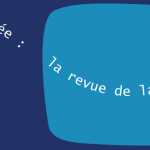Présentation
RÉSUMÉ
L'ingénierie de dispersion dans les matériaux artificiels tels que les cristaux photoniques permet un contrôle sans précédent de la propagation de la lumière. Cette ingénierie globale des paramètres effectifs des matériaux a permis la mise en évidence de régimes d'ultra-réfraction (autocollimation, réfraction négative) et trouve désormais son prolongement par une ingénierie localisée dans le cadre de l'optique de transformation (et la recherche de l'invisibilité). Après une description des principes physiques, différentes réalisations technologiques pour la focalisation et l'invisibilité en infrarouge à base de cristaux photoniques sont présentées. Pour conclure, une étude de faisabilité pour la détection et l'imagerie est proposée.
Lire cet article issu d'une ressource documentaire complète, actualisée et validée par des comités scientifiques.
Lire l’articleAuteur(s)
-
Olivier VANBESIEN : Professeur des universités - Institut d’Électronique de Microélectronique et de Nanotechnologie (IEMN – UMR CNRS 8520) – Université Lille 1, avenue Poincaré CS60069, 59652 Villeneuve d’Ascq Cedex, France
INTRODUCTION
l’ingénierie de dispersion dans les matériaux artificiels tels que les cristaux photoniques permet un contrôle sans précédent de la propagation de la lumière. Cette ingénierie globale des paramètres effectifs des matériaux a permis la mise en évidence de régimes d’ultra-réfraction (autocollimation, réfraction négative) et trouve désormais son prolongement par une ingénierie localisée dans le cadre de l’optique de transformation (et la recherche de l’invisibilité). Après une description des principes physiques, différentes réalisations technologiques pour la focalisation et l’invisibilité en infrarouge à base de cristaux photoniques seront présentées. Pour conclure, une étude de faisabilité pour la détection et l’imagerie sera proposée.
MOTS-CLÉS
optique de transformation cristaux photoniques ultra-réfraction réfraction négative gradient d’indice
DOI (Digital Object Identifier)
CET ARTICLE SE TROUVE ÉGALEMENT DANS :
Accueil > Ressources documentaires > Sciences fondamentales > Nanosciences et nanotechnologies > Nanotechnologies pour l'électronique, l'optique et la photonique > Nanophotonique : ingénierie de dispersion pour la détection et l’imagerie infrarouge
Accueil > Ressources documentaires > Innovation > Nanosciences et nanotechnologies > Nanotechnologies pour l'électronique, l'optique et la photonique > Nanophotonique : ingénierie de dispersion pour la détection et l’imagerie infrarouge
Cet article fait partie de l’offre
Optique Photonique
(221 articles en ce moment)
Cette offre vous donne accès à :
Une base complète d’articles
Actualisée et enrichie d’articles validés par nos comités scientifiques
Des services
Un ensemble d'outils exclusifs en complément des ressources
Un Parcours Pratique
Opérationnel et didactique, pour garantir l'acquisition des compétences transverses
Doc & Quiz
Des articles interactifs avec des quiz, pour une lecture constructive
Présentation
Cet article fait partie de l’offre
Optique Photonique
(221 articles en ce moment)
Cette offre vous donne accès à :
Une base complète d’articles
Actualisée et enrichie d’articles validés par nos comités scientifiques
Des services
Un ensemble d'outils exclusifs en complément des ressources
Un Parcours Pratique
Opérationnel et didactique, pour garantir l'acquisition des compétences transverses
Doc & Quiz
Des articles interactifs avec des quiz, pour une lecture constructive
BIBLIOGRAPHIE
-
(1) - YABLONOVITCH (E.), GMITTER (T.J.), LEUNG (K.M.) - Photonic band structures ; The face-centered cubic case employing non spherical atoms - Phys Rev Lett, Vol. 67 n° 17, pp. 2295-98 (1991).
-
(2) - JOHN (S) - Strong localization of photons in certain disordered dielectric superlattices - Phys Rev Lett., Vol. 58 n° 23, pp. 2486-89 (1987).
-
(3) - JOANNOPOULOS (J.D.), MEADE (R.D.), WINN (J.N.) - Photonic crystal : molding the flow of light - Princeton, NJ, Princeton University Press (1995).
-
(4) - VESELAGO (V.G.) - The electrodynamics of substances with simultaneously negative of ε and µ - Sov Phys-Usp, Vol. 10, pp. 509-14 (1968).
-
(5) - PENDRY (J.B.) - Negative refraction makes a perfect lens - Phys Rev Lett, Vol. 85 n° 8, pp. 3966-69 (2000).
-
(6) - VANBESIEN (O.) - * - ....
Cet article fait partie de l’offre
Optique Photonique
(221 articles en ce moment)
Cette offre vous donne accès à :
Une base complète d’articles
Actualisée et enrichie d’articles validés par nos comités scientifiques
Des services
Un ensemble d'outils exclusifs en complément des ressources
Un Parcours Pratique
Opérationnel et didactique, pour garantir l'acquisition des compétences transverses
Doc & Quiz
Des articles interactifs avec des quiz, pour une lecture constructive











